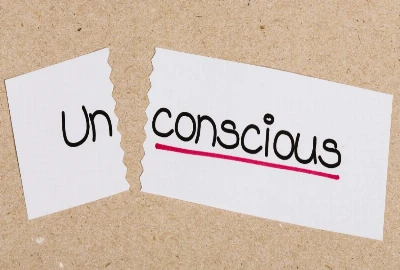Interface Intuition: When Design Becomes a Feeling

Great design doesn’t just work — it feels right. From the satisfying “click” of a button to the seamless glide of a scrolling feed, intuitive interfaces don’t ask users to think; they invite them to feel. This invisible fluency between human and machine — what we can call interface intuition — represents the emotional frontier of design.
In a digital ecosystem saturated with noise, complexity, and constant updates, users crave experiences that feel natural, trustworthy, and emotionally resonant. Interface intuition isn’t merely usability; it’s empathy made functional — the capacity for design to anticipate what users need before they know it themselves.
This blog explores the emotional physics of interface intuition: how design becomes feeling, why intuitive interaction builds trust, and how digital empathy is shaping the future of human-computer connection.
The Feeling of Function: What Is Interface Intuition?

Design Beyond Logic
Interface intuition refers to the emotional ease users experience when a digital product “just works.” It’s not about knowing how something functions but feeling how it should. Good interfaces mirror human instincts — tapping into rhythm, familiarity, and subtle visual cues that make technology feel human.
Think of Apple’s iOS gestures or Google’s minimalist search bar. These aren’t just clean designs; they’re emotional contracts. They reassure users that they’re in control while making interaction feel effortless. The success lies in translating psychological comfort into design flow.
The Neuroscience of Intuitive Design
Cognitive psychology shows that our brains are wired for pattern recognition. We instinctively seek order in interfaces — hierarchy, balance, and predictability. When a design aligns with these innate patterns, it triggers fluency — a state where interaction feels natural. This ease releases dopamine, creating emotional satisfaction. In essence, intuitive design literally feels good to the brain.
The Invisible Interface
Interface intuition aims for invisibility. The best designs disappear, leaving only the experience. When users stop noticing the interface — when actions flow without friction — design has transcended its medium. It becomes emotion in motion.
Emotional UX: The Psychology of Feeling Through Design

The Affect of Aesthetics
A user’s first impression of a product happens in less than 50 milliseconds. Colors, typography, and motion trigger instant emotional responses that shape trust. Warm tones evoke comfort; cool hues suggest professionalism. Rounded edges feel friendly; sharp angles convey precision. Every design choice is a conversation with the subconscious.
Trust and Emotional Resonance
Emotionally intelligent design doesn’t only look good — it feels safe. Subtle microinteractions, like a soft vibration or a smooth animation, communicate care and reliability. This trust forms what UX designers call affective resonance — when a user’s feelings align with a brand’s design tone.
Designing for Empathy
Empathy-driven UX asks: What does the user feel, not just what do they need? From accessibility features to inclusive imagery, empathetic design validates emotional diversity. It ensures that users — regardless of background or ability — feel seen, respected, and emotionally secure in digital environments.
Flow States and Frictionless Interaction: When Design Disappears

The Physics of Flow
Psychologist Mihaly Csikszentmihalyi described flow as a state of deep engagement where action and awareness merge. Intuitive design creates this flow digitally. Every gesture, scroll, or transition aligns with expectation, eliminating friction. The interface becomes a conduit for creativity and focus.
The Art of Reduction
Intuitive design thrives on simplicity, not emptiness. Removing unnecessary elements helps users move instinctively through tasks. Every added feature should serve clarity, not clutter. Minimalism in this sense isn’t aesthetic restraint — it’s emotional generosity, giving users space to think and feel freely.
Predictive Design and Cognitive Ease
Predictive design — where systems anticipate user needs — deepens interface intuition. From auto-suggestions in search bars to AI-driven shortcuts, technology can feel almost psychic when it reduces cognitive effort. But prediction must be balanced with consent: over-personalization risks intruding on autonomy, replacing empathy with algorithmic control.
The Emotional Grammar of Interaction: Micro-Moments That Matter

Microinteractions as Emotional Anchors
Every toggle, swipe, or notification tone contributes to a product’s emotional texture. These microinteractions guide users, offering feedback that mimics human dialogue. The gentle bounce of an icon or the satisfying click of a digital button communicates responsiveness — a kind of digital body language.
Sound, Touch, and Sensory Design
Haptic feedback and auditory cues deepen interface emotion. A soft vibration on confirmation or a subtle sound on error reinforces emotional realism. The goal isn’t just feedback, but feelingback — creating multisensory experiences that simulate care and clarity.
Storytelling Through Interface Rhythm
Great interfaces have rhythm. Motion design — transitions, fades, scroll speeds — creates narrative flow. Each motion, no matter how small, signals progression and coherence. When users feel guided rather than directed, design becomes storytelling, and interaction turns into an emotional journey.
Designing for Digital Empathy: Interfaces That Care

Human-Centered Design Philosophy
Human-centered design treats emotion as a core metric, not a byproduct. It begins with empathy mapping — understanding not just user goals, but emotional states during interaction. Designers use these insights to build products that comfort, reassure, or inspire, instead of simply functioning.
Accessibility as Emotional Inclusion
Accessibility isn’t just compliance — it’s compassion in design form. Features like alt text, voice navigation, and adaptive layouts express respect for diverse users. When accessibility is seamless, users feel dignity rather than difference — a profound emotional achievement in interface design.
Designing for Vulnerable Moments
Consider the interfaces used in healthcare apps, financial tools, or mental health platforms. These spaces handle emotionally charged interactions. The tone, color, and feedback of such designs can soothe or stress users. Designing for vulnerability means treating every click as a potential heartbeat — a chance to comfort rather than confuse.




